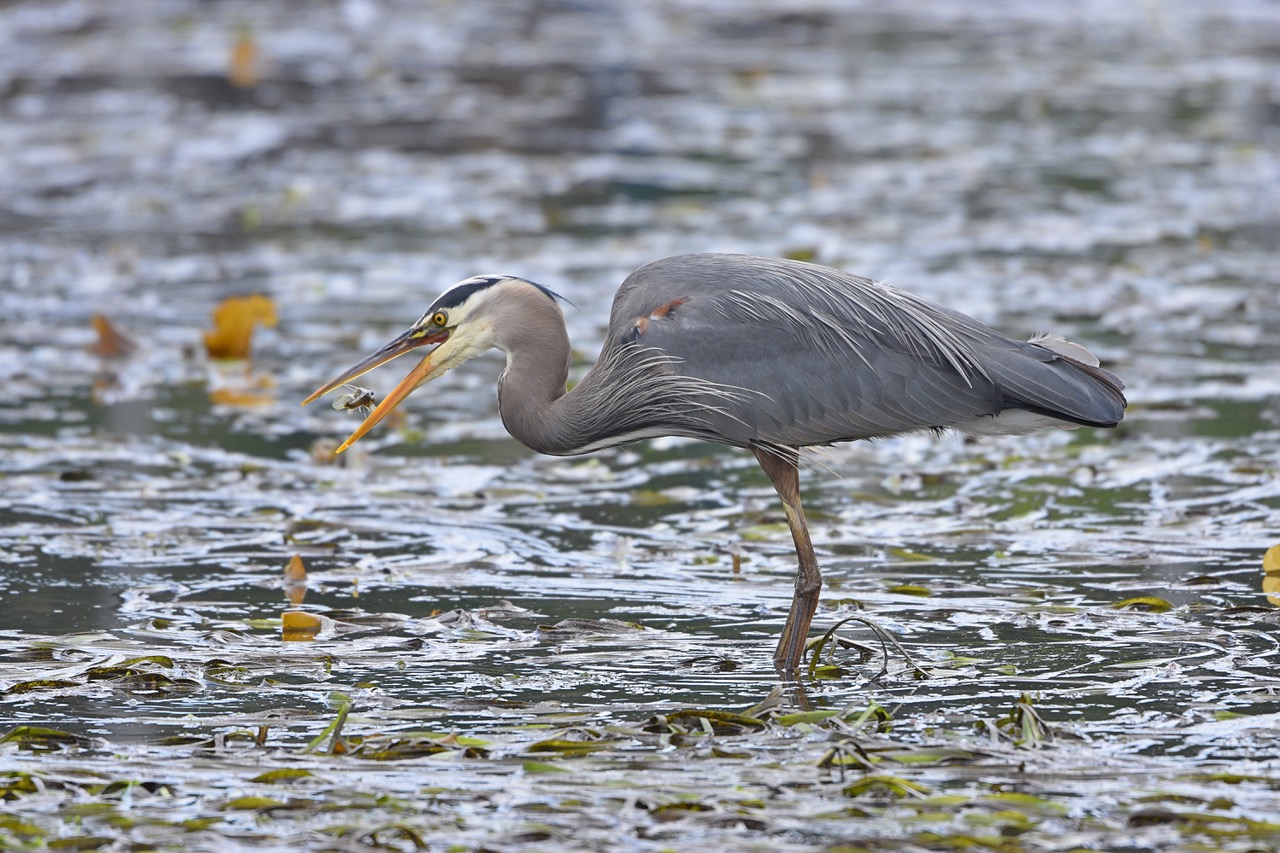Blue herons identified as a significant juvenile salmon predator
March 8, 2021

March 8, 2021

Pacific great blue herons could be scooping up as many as three percent of all juvenile salmon and as many as six percent in some years with low water flow, according to a new University of British Columbia study.
The study, published in The Canadian Journal of Zoology, is the first to estimate the portion of juvenile salmon being preyed upon by the understudied bird species in the Salish Sea region.
Up to 50 per cent of juvenile salmon deaths occur when the young fish pass through a gauntlet of predators and damaged habitats on their way to the ocean. Exactly how all these fish die has been a cause for concern, and the focus of extensive studies to identify predators.
Lead author Zachary Sherker, a PhD student at the Institute for the Oceans and Fisheries at UBC, had been looking for evidence of salmon being preyed upon by well-known freshwater predators recorded in Western scientific literature, like racoons, otters, king fishers and mink, and hadn’t found anything.
But a boat trip with a local Indigenous collaborator led to a breakthrough.
“I was getting a ride to seal haul-outs with a Cowichan Tribes biologist named Tim Kulchyski and airing my woes to him,” said Sherker. “He looked over at a bunch of herons foraging at the outflow of the river and said, ‘Did you ever look into herons?’ That day I went over and found about 100 tags.”
Sherker scanned the forest floor of heron rookeries with a magnetic device that activates Passive Integrated Transponder (PIT) tags previously placed inside juvenile salmon by scientists and salmon hatchery staff between 2008 and 2018 to study their migration to the Pacific Ocean.
Over the course of the study, he located one per cent of all 100,000 tags implanted in juvenile salmon moving through the Cowichan, Big Qualicum and Capilano rivers.
When considering the number of tags deposited outside of rookeries, Sherker and his co-authors estimate that heron predation may account for up to three percent of all juvenile salmon deaths, and could be as high as six percent in some years with low water flow.
The culprit has been difficult to pinpoint, due in part to the fact that the digestive tract of the blue heron breaks down all parts of the salmon, including bones. Salmon remains in heron scat had thus eluded researchers, according to Sherker.
“I was most surprised to find that herons are foraging on smaller juvenile. This is a bit of a shock because visual predators often target larger prey items,” said Sherker.
Because herons are consuming salmon in relatively high numbers, the study authors think that juvenile salmon – who are generally smaller than other prey species available during chick rearing season – may be an essential part of the diet of young herons. Heron chicks are unable to open their mouths wide enough to swallow larger fish, making juvenile salmon an important bite-sized prey item.
Knowing where young salmon are dying has become more critical as salmon stocks decline. Fortunately, the researchers believe that herons preying on smaller, weaker salmon may even be beneficial.
“Herons may be taking out fish that were destined to die somewhere else along the way, but were going to live long enough to compete with other fish for potentially limited resources in the early marine environment. This predation could benefit salmon stocks by weeding out the weak and allowing for less competition and higher growth among other fish in these critical juvenile life stages,” said Sherker.
The findings suggest that heron rookeries near rivers should be monitored and heron predation on salmon be taken into account in future salmon recovery plans.
The study was done in collaboration with the British Columbia Conservation Foundation and Cowichan Tribes, and was funded by the Pacific Salmon Foundation with support of a MITACS Accelerate grant.
We honour xwməθkwəy̓ əm (Musqueam) on whose ancestral, unceded territory UBC Vancouver is situated. UBC Science is committed to building meaningful relationships with Indigenous peoples so we can advance Reconciliation and ensure traditional ways of knowing enrich our teaching and research.
Learn more: Musqueam First Nation